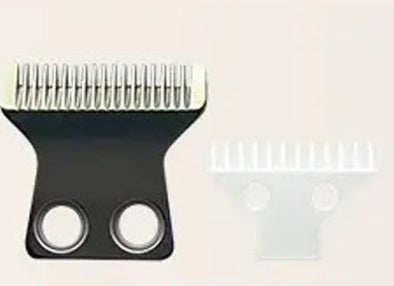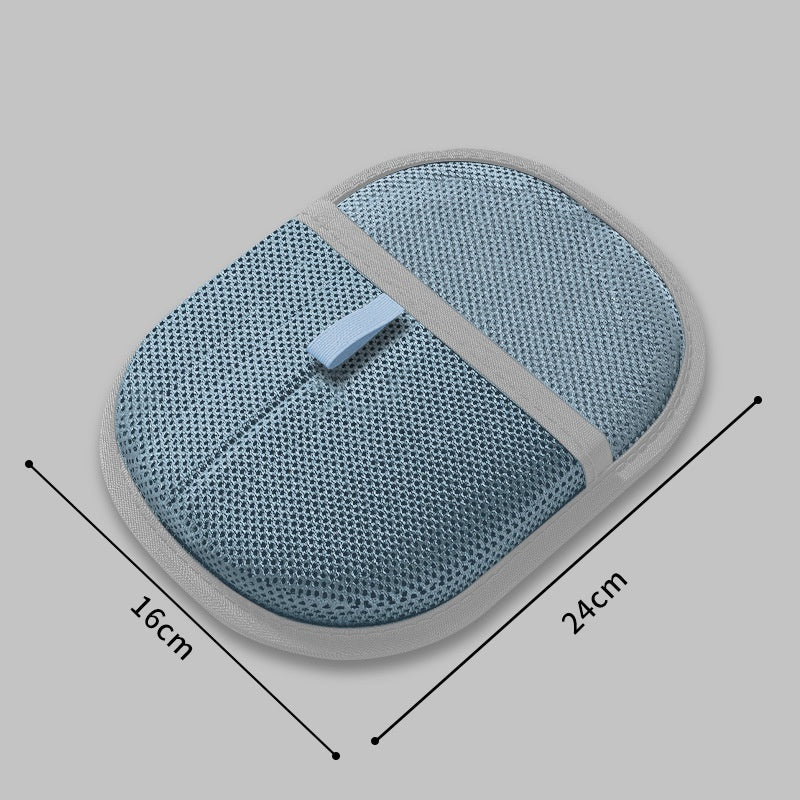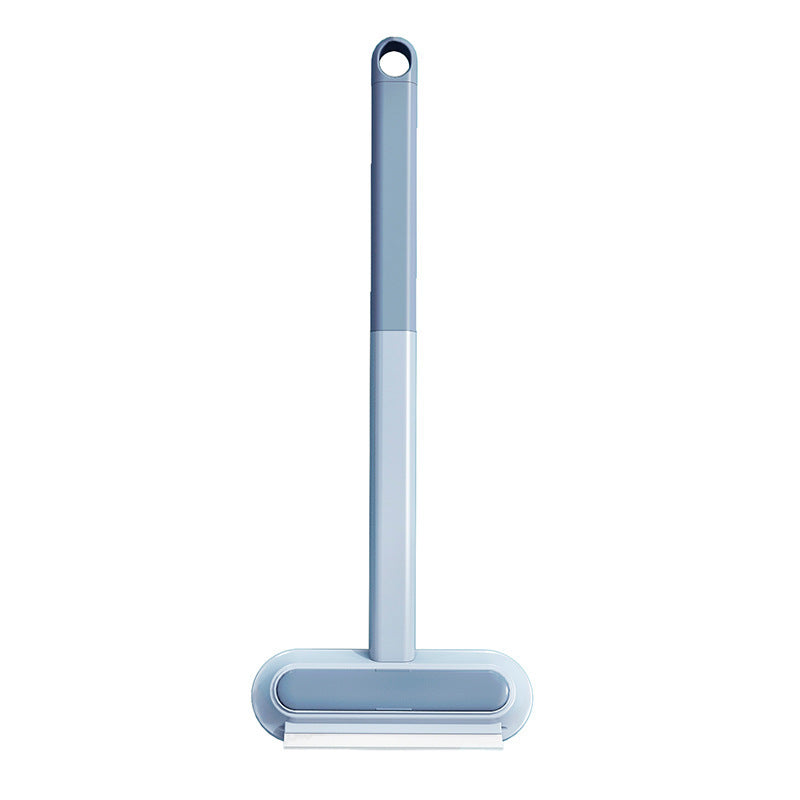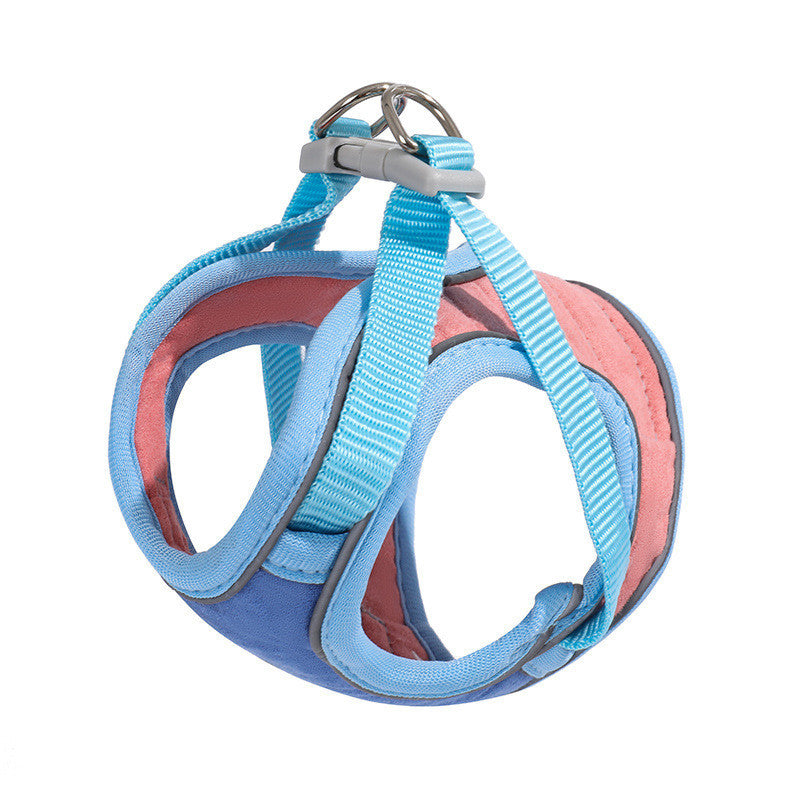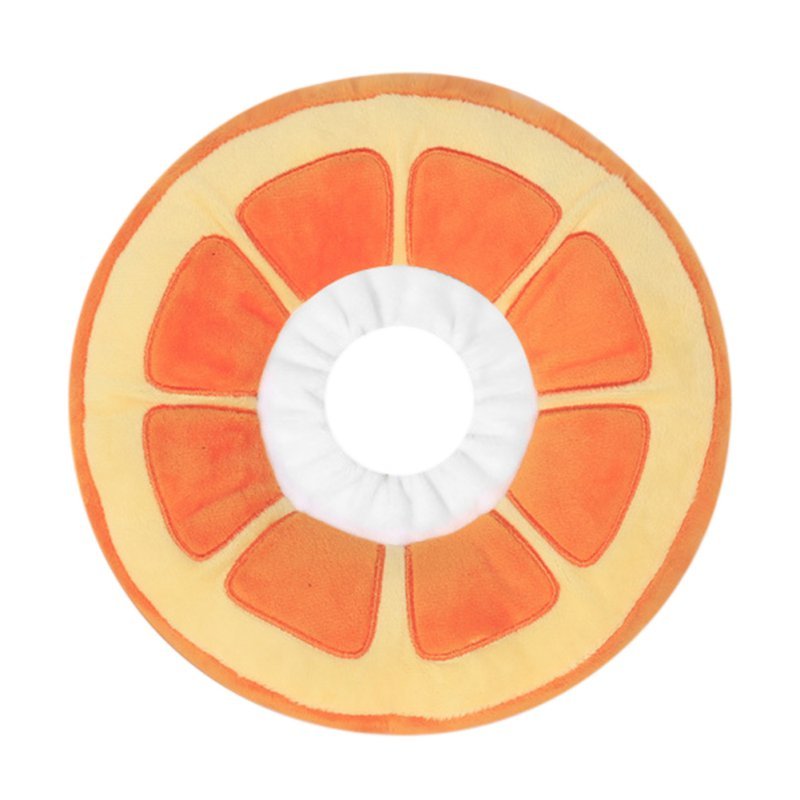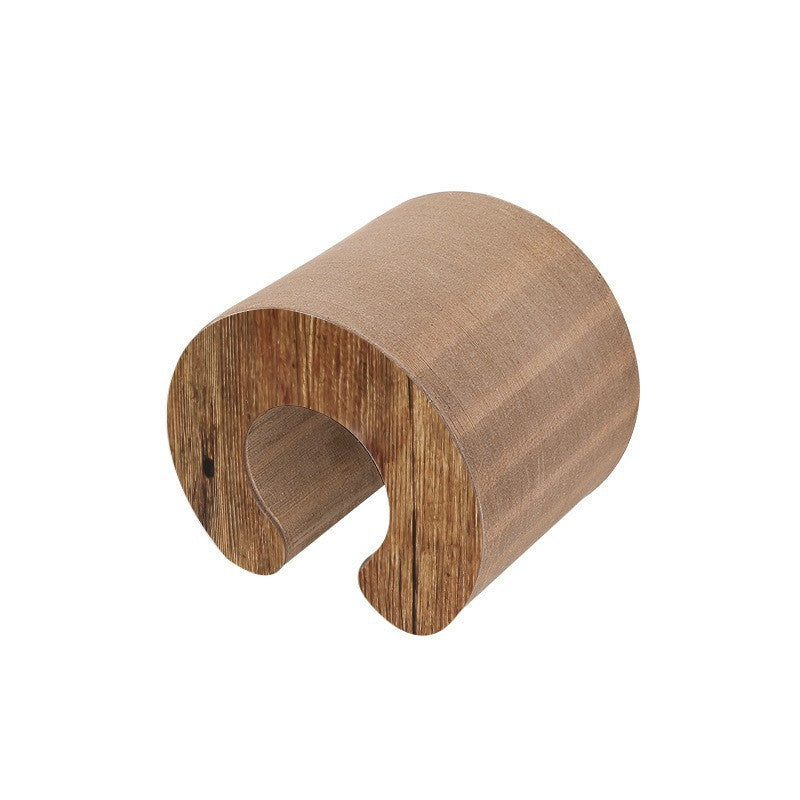Have you ever wondered why your cat's whiskers twitch with anticipation when they're curious, spread wide when they're investigating something new, or flatten defensively against their face when they're scared?
Those delicate, seemingly simple hairs aren't just decorative features that make your cat look distinguished and wise. They're incredibly sophisticated sensory tools that serve as your cat's personal radar system, helping them navigate the world with remarkable precision and awareness.
Understanding the intricate world of whiskers can give you profound insights into your cat's emotions, their perception of their environment, and their overall well-being. These remarkable structures offer a fascinating glimpse into the evolutionary adaptations that make cats such successful predators and companions. Let's explore the captivating science behind these tiny but mighty sensors and discover how they contribute to your cat's daily life in ways you might never have imagined.
Why Whiskers Matter: The Anatomy of Sensitivity
Whiskers, scientifically known as vibrissae (from the Latin word meaning "to vibrate"), are far more complex and important than ordinary facial hair. These specialised structures are deeply embedded in your cat's face, extending three times deeper into the skin than regular fur. Each whisker is connected to a follicle that's packed with nerve endings, blood vessels, and muscle fibres, creating an incredibly sensitive sensory organ that rivals the sensitivity of human fingertips.
According to groundbreaking research conducted at the University of Sydney's Faculty of Veterinary Science, these remarkable sensory tools serve multiple critical functions. Whiskers help cats gauge spatial relationships, detect the slightest movement in their environment, sense changes in air pressure and currents, and even assist in assessing the texture and temperature of objects before direct contact. The whisker system is so sophisticated that it can detect vibrations as small as 2,000 times smaller than the width of a human hair.
The positioning of whiskers isn't random either. The main facial whiskers, known as mystacial whiskers, are strategically located on the muzzle in four rows on each side. The upper rows can move independently from the lower rows, allowing cats to create complex sensory maps of their surroundings. Additional whiskers above the eyes (superciliary whiskers) act like protective sensors, triggering an automatic blink reflex when objects come too close to the eyes.
How Whiskers Work: Nature's Multi-Tool System
1. Measuring Spaces and Spatial Awareness
The most well-known function of whiskers relates to spatial navigation. A cat's whiskers are typically the same width as the widest part of their body, creating a built-in measuring system that helps them determine whether they can fit through tight spots without getting stuck. This evolutionary adaptation is particularly crucial for cats navigating through dense vegetation, rocky crevices, or household spaces where precision matters.
However, the spatial sensing capabilities extend far beyond simple width measurement. Whiskers can detect the proximity of objects without direct contact by sensing how air currents change when they encounter obstacles. This allows cats to create detailed three-dimensional maps of their environment, even in complete darkness. The whiskers essentially function like a biological sonar system, providing real-time feedback about spatial relationships and potential navigation hazards.
2. Detecting Movement and Vibrations
Whiskers are incredibly sensitive to vibrations and air movements, capable of detecting disturbances so subtle that they're imperceptible to humans. This sensitivity allows cats to sense the movement of small prey animals, even when they're hidden in grass or behind obstacles. The whiskers can pick up the tiny air currents created by a mouse's movement or the almost imperceptible vibrations transmitted through the ground.
This detection system is particularly valuable during hunting, as it provides cats with information about prey location, size, and movement patterns before visual confirmation. The whiskers can sense whether captured prey is still moving, helping cats determine if their hunting attempt was successful and whether the prey poses any remaining threat.
3. Emotional and Behavioural Indicators
Cat whiskers serve as an excellent barometer of emotional state and intention, providing clear visual cues about your cat's current mood and likely behaviour:
- Relaxed and Content: Whiskers point forward or slightly outward in a natural, unstressed position
- Curious and Investigative: Whiskers move forward actively, twitching or moving rapidly as they gather sensory information
- Anxious, Defensive, or Frightened: Whiskers flatten tightly against the face, reducing their profile and protecting these sensitive structures
- Aggressive or Predatory: Whiskers point forward and spread wide, maximising sensory input during hunting or confrontational situations
- Contentment During Social Interaction: Whiskers may relax and point slightly backward when being petted or during friendly interactions
4. Navigation in Low Light Conditions
Cats are naturally crepuscular animals, most active during dawn and dusk when light levels are low. Whiskers play a crucial role in their ability to navigate confidently in these conditions. By detecting air currents, sensing nearby objects, and feeling their way through the environment, whiskers allow cats to move with surprising grace and precision even in complete darkness.
The whiskers work in conjunction with other senses to create a comprehensive understanding of the environment. They can detect changes in air temperature that might indicate open windows or doors, sense the presence of other animals through minute air disturbances, and identify familiar versus unfamiliar territories through subtle environmental cues.
The Complete Whisker System: More Than Just Facial Hair
Facial Whiskers (Mystacial Whiskers)
Most people are familiar with the prominent whiskers on either side of a cat's nose, but the complete whisker system is more extensive. Cats typically have 12 primary whiskers on each side of their face, arranged in four horizontal rows. These whiskers can move independently, allowing cats to direct their sensory attention in multiple directions simultaneously.
Eyebrow Whiskers (Superciliary Whiskers)
The shorter whiskers above each eye serve as protective sensors, automatically triggering a blink reflex when objects approach too closely. These whiskers are particularly important for protecting the eyes during hunting activities or when moving through dense vegetation.
Chin Whiskers
Often overlooked, the whiskers on the chin help cats evaluate food and water before consumption. They can detect the depth and temperature of water bowls and assess the texture and freshness of food.
Leg Whiskers (Carpal Whiskers)
Located on the back of the front legs, these whiskers are particularly important for cats that climb. They help assess the stability and texture of surfaces and can detect the movement of prey that might be hiding beneath the cat's body during hunting.
Ear Whiskers
Small whiskers around the ears help detect air movements and sounds, contributing to the cat's excellent hearing abilities.
Fascinating Facts About Whisker Science
Growth and Regeneration
Whiskers follow a natural growth cycle, typically shedding and regrowing every two to three months. Unlike regular fur, whiskers grow from special follicles that are much deeper and more complex. If a whisker is accidentally cut or damaged, it will grow back, but the process can take several months and may cause temporary disorientation or stress for your cat.
Breed Variations
While most cats have similar whisker arrangements, some breeds show interesting variations. Sphynx cats may have few or no whiskers due to the same genetic mutation that affects their coat. Rex breeds often have curly whiskers that may be more fragile than straight ones. Some breeds, like the Maine Coon, may have particularly long and prominent whiskers that reflect their larger body size.
Communication Tool
Whiskers also play a role in feline communication. During social interactions, cats may use whisker position to signal their intentions to other cats. Forward-pointing whiskers can indicate interest or mild aggression, while relaxed whiskers suggest peaceful intentions.
Stress Indicators
Chronically flattened whiskers can indicate ongoing stress or anxiety. If you notice your cat's whiskers are consistently held tightly against their face, it may be worth evaluating their environment for potential stressors and consulting with your veterinarian.
Health Considerations and Warning Signs
Normal Whisker Maintenance
Healthy whiskers should appear clean, straight, and firmly attached. They may naturally shed occasionally, which is perfectly normal. The whisker follicles should appear healthy without signs of irritation, swelling, or discharge.
Signs That Warrant Veterinary Attention
Monitor your cat's whiskers for concerning changes that might indicate underlying health issues:
- Persistent breakage or damage - Could indicate nutritional deficiencies, skin conditions, or excessive stress
- Bent or permanently curved whiskers - May suggest injury or chronic pressure against surfaces
- Discolouration of whiskers - Changes in colour might indicate systemic health issues
- Swelling or redness around whisker follicles - Could suggest infection or folliculitis
- Persistent drooling or pawing at the face - Might indicate whisker stress or oral health problems
- Changes in eating habits coinciding with whisker issues - Could suggest whisker fatigue or discomfort
- Sudden loss of multiple whiskers - May indicate skin disease, hormonal issues, or stress
Whisker Fatigue: A Modern Concern
Whisker fatigue is a condition where cats become stressed or uncomfortable due to overstimulation of their whiskers. This can occur when food or water bowls are too narrow, forcing the whiskers to constantly touch the sides. Symptoms include reluctance to eat or drink, pawing at food bowls, or eating only from the centre of the bowl.
Creating a Whisker-Friendly Environment
Proper Bowl Selection
Choose wide, shallow bowls that allow your cat to eat and drink without their whiskers touching the sides. Ceramic or stainless steel bowls are preferable to plastic, which can harbour bacteria and cause chin acne.
Safe Spaces
Ensure your cat has access to spaces where they can move freely without constantly brushing their whiskers against walls or furniture. This is particularly important for senior cats or those with mobility issues.
Stress Reduction
Since whisker position often reflects emotional state, creating a calm environment can help maintain healthy whisker behaviour. Provide hiding spots, maintain consistent routines, and address sources of household stress.
Where to Learn More About Feline Sensory Science
Academic Resources
- University of Sydney Faculty of Veterinary Science: Offers extensive research publications on feline sensory systems and behaviour
- Australian National University Animal Behaviour Research: Provides insights into the evolutionary aspects of feline sensory adaptations
- CSIRO Animal Health Research: Conducts studies on companion animal welfare and sensory biology
Professional Organisations
- Australian Veterinary Association (AVA): Publishes articles on cat health, behaviour, and anatomy in their professional journals
- Australian Association of Veterinary Surgeons: Offers continuing education resources on feline medicine and behaviour
- Australian Pet Welfare Foundation: Provides evidence-based information on cat care and wellbeing
Local Learning Opportunities
- Veterinary Teaching Hospitals: Many universities offer public seminars on pet health and behaviour
- Local Veterinary Clinics: Often host educational workshops on cat care, anatomy, and behaviour interpretation
- Cat Behaviour Specialists: Professional animal behaviourists can provide personalised insights into whisker-related behaviours
Your cat's whiskers represent millions of years of evolutionary refinement, creating a sensory system that's both elegant and incredibly effective. These remarkable structures are far more than just distinctive facial features.
They're sophisticated biological instruments that provide your cat with a rich, detailed understanding of their world. By paying attention to whisker position and movement, you can gain valuable insights into your cat's emotional state, comfort level, and overall wellbeing.
Understanding and respecting the importance of whiskers can significantly improve your relationship with your feline companion. When you recognise the subtle communications conveyed through whisker position, you become better equipped to respond appropriately to your cat's needs and emotions, creating a more harmonious and understanding household for both of you.
Frequently Asked Questions
Q: Can I trim my cat's whiskers to make them look neater?
A: Absolutely not. Trimming whiskers is never appropriate and can cause significant distress to your cat. Whiskers are essential sensory organs, and cutting them can lead to disorientation, anxiety, and difficulty navigating their environment. Cats may become hesitant to jump, climb, or move through spaces they previously navigated confidently. The whiskers will eventually grow back, but the process takes several months and can be uncomfortable for your cat.
Q: Why do my cat's whiskers sometimes twitch or flick rapidly?
A: Rapid whisker movement typically indicates heightened curiosity, excitement, or active sensory investigation. Your cat is essentially "scanning" their environment for information, much like how we might turn our head to listen more carefully to a sound. This behaviour is particularly common when cats encounter new smells, sounds, or objects. During hunting play, whisker twitching helps cats gather detailed information about their "prey" or toy.
Q: Do all cats have exactly the same number of whiskers?
A: While most cats have approximately 12 whiskers on each side of their face, there can be natural variation. Some cats may have 10-16 whiskers per side. Certain breeds show more variation. Rex breeds may have fewer whiskers that appear curly or brittle, whilst Sphynx cats may have very few or no whiskers at all due to their genetic makeup. The total number isn't as important as having functional whiskers that serve their sensory purpose.
Q: How long does it take for whiskers to grow back if they're damaged?
A: Whisker regrowth is a slow process, typically taking 6-12 weeks for complete replacement. The exact timing depends on your cat's age, health, and individual growth rate. During the regrowth period, cats may show some hesitancy in navigating tight spaces or jumping to familiar perches. Young, healthy cats generally regrow whiskers faster than older cats or those with underlying health conditions.
Q: How do whiskers specifically help cats hunt more effectively?
A: Whiskers provide cats with remarkable hunting advantages through multiple mechanisms. They detect minute vibrations caused by prey movement, even when the prey is hidden in grass or under objects. Whiskers can sense air currents created by moving animals and help cats determine the exact location and size of captured prey. When cats carry prey, their whiskers help them assess whether the prey is still alive and potentially dangerous. The whiskers also help cats navigate silently through vegetation whilst stalking, avoiding branches that might create noise.
Q: Can whisker position really tell me how my cat is feeling?
A: Yes, whisker position is an excellent indicator of feline emotional state, though it should be interpreted alongside other body language cues. Forward-pointing, actively moving whiskers suggest curiosity or hunting behaviour. Whiskers pulled tightly against the face indicate fear, anxiety, or defensive behaviour. Relaxed whiskers in a neutral position suggest contentment. However, remember that whisker position should be considered alongside ear position, tail movement, body posture, and vocalisation for accurate interpretation.
Q: What is whisker fatigue, and how can I prevent it?
A: Whisker fatigue occurs when cats experience sensory overload from their whiskers constantly touching the sides of food or water bowls. Symptoms include eating only from the centre of bowls, pawing at food, reluctance to eat, or preferring to eat off flat surfaces. Prevention involves using wide, shallow bowls that allow cats to eat without whisker contact. The bowl should be wide enough that the whiskers don't touch the sides when the cat's head is positioned normally for eating.
Q: Is it normal for cats to lose whiskers occasionally?
A: Yes, occasional whisker shedding is completely normal, just like regular fur shedding. Whiskers have a natural growth cycle and may shed every few months. However, sudden loss of multiple whiskers, frequent breakage, or whiskers that appear damaged could indicate stress, nutritional deficiencies, or health issues. If you notice unusual patterns of whisker loss, consult your veterinarian to rule out underlying problems.









